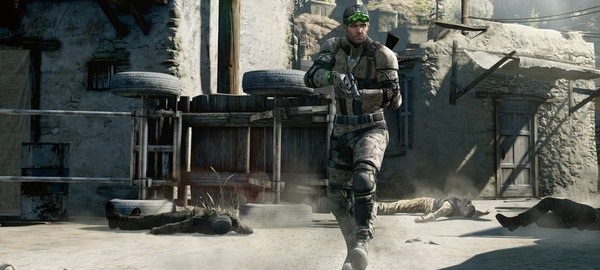Ubisoft has released a new, extended walkthrough of Splinter Cell: Blacklist and the level that was demonstrated was the same one that appeared in this year’s E3. This walkthrough is centered around the action path of Splinter Cell: Blacklist and although Ubisoft stated that there will be a stealth approach in almost every mission, most Splinter Cell fans will be furious with what the company has done to their amazing franchise. However, this is why you should not get disappointed.
First things first – Splinter Cell is not what it used to be and you better realize that. This is not Chaos Theory and will never be a sequel to it. Splinter Cell has entered the action realm in an attempt to attract more audience. We know, you don’t like this but that’s the hard truth. After all, both Rainbow Six and Ghost Recon have been dumbed down and were more action packed than their predecessors. Why would the new Splinter Cell be any different?
After realizing this, it’s time to take a new, different look at what Ubisoft is offering. And to be honest, it looks like an enjoyable third person action shooter. Splinter Cell: Blacklist seems like a mix between Splinter Cell: Conviction, Assassin’s Creed and Ghost Recon: Future Soldier. Mark and Execute returns and is as annoying as ever, and this time around, Sam can climb cliffs like Altair (or Ezio if you prefer) and has a sonar radar that is similar to the one found in Future Soldier and Prototype 2. And as usual, there are lots of cut-scenes, scripted events, a covering system an sequences similar to Uncharted.
Ubisoft is obviously throwing everything to attract casual gamers, and that’s the company’s target group. No Splinter Cell fans, this is not the game you’ve been waiting for. And why you should not get disappointed? Because you can easily forget about it and keep playing the old Splinter Cell games. You see, nobody puts a gun to your head and forces you to get this new Splinter Cell game, and since this game is not up to your standards, you should not even bother wasting your time on it. The sooner you realize that, the better.
Yes, there will be a stealth approach to Splinter Cell: Blacklist and yes, players will be able to drag bodies. However, the game is built with different standards and is not as niche as the old Splinter Cell titles. Blacklist will never be a true sequel to Chaos Theory, so there is no point wishing for something like that. Of course and the developers will say how similar to the old games Blacklist is, but we’ve heard this claim – especially from Ubisoft – and before.
In other words, Splinter Cell: Blacklist is more action oriented and more friendly to those that were not familiar with the franchise. So, die-hard Splinter Cell fans, this is not a tribute to the classic Splinter Cell titles. Splinter Cell entered a new era – a long time ago – and won’t return to its roots. This is, as Neogaf members described, Tom Clancy’s Action Man: The Shootbang.
The old Splinter Cell games are dead, and that’s a fact, as are the old Ghost Recon and Rainbow Six games. And no, these franchises will never return to their roots as they are currently targeting a different group of gamers. Therefore, if you don’t like this current-generation version of Splinter Cell, vote with your wallet and don’t get it. It’s harsh, it sucks, and we know how much you want to see a new, proper Splinter Cell game. Unfortunately though, the only thing you can currently do is to vote with your wallet and support other, indie attempts.

John is the founder and Editor in Chief at DSOGaming. He is a PC gaming fan and highly supports the modding and indie communities. Before creating DSOGaming, John worked on numerous gaming websites. While he is a die-hard PC gamer, his gaming roots can be found on consoles. John loved – and still does – the 16-bit consoles, and considers SNES to be one of the best consoles. Still, the PC platform won him over consoles. That was mainly due to 3DFX and its iconic dedicated 3D accelerator graphics card, Voodoo 2. John has also written a higher degree thesis on the “The Evolution of PC graphics cards.”
Contact: Email

